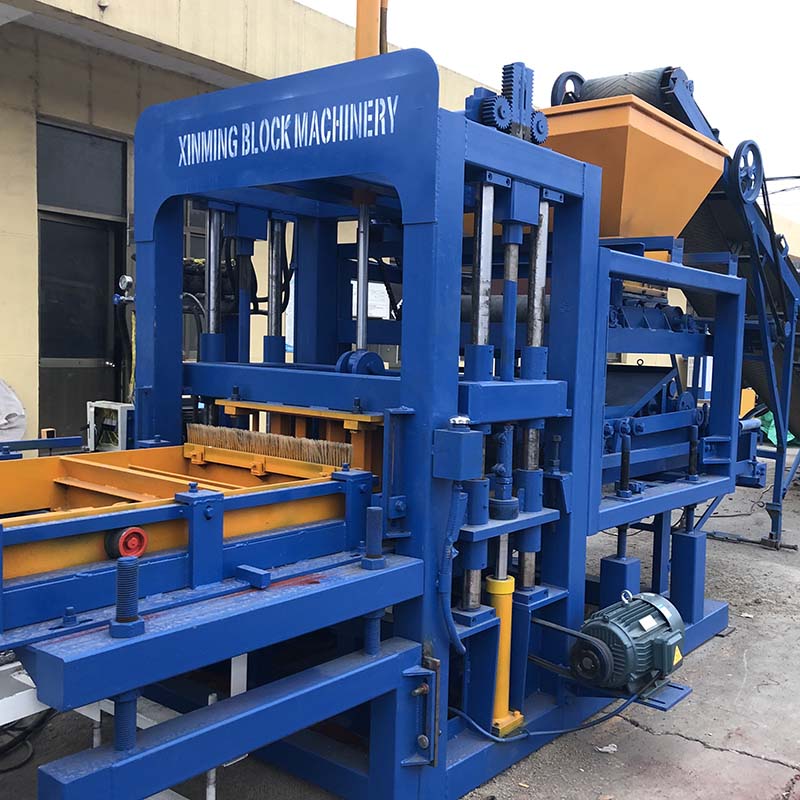
Image source:Aiwei block machine
Introduction
In a world increasingly driven by technology and automation, traditional brick making techniques hold a unique cultural significance. These age-old methods, passed down through generations, represent a rich heritage and embody the craftsmanship, artistry, and cultural identity of communities around the world. However, as machine-based brick production becomes more prevalent, there is a growing need to explore and preserve the cultural significance of these traditional techniques. In this article, we will delve into the cultural importance of traditional brick making techniques in an era dominated by machines, discussing their historical value, craftsmanship, sustainability, connection to local communities, challenges they face in the modern world, and the potential for their revitalization.
Historical Value and Cultural Heritage
Traditional brick making techniques carry historical value and represent an important aspect of a region’s cultural heritage. These methods have been used for centuries, shaping the architectural landscapes and traditions of communities. The bricks produced through these techniques bear witness to the history and evolution of construction practices, reflecting the craftsmanship and expertise of earlier generations.
The preservation of traditional brick making techniques allows for the continuity of this heritage. It enables future generations to appreciate the architectural styles and construction methods that have shaped their communities. By valuing and documenting traditional techniques, we can ensure that the cultural legacy embedded in the process is not lost in the face of modernization.
Craftsmanship and Artistry
Traditional brick making techniques involve a high level of craftsmanship and artistry. From the selection of suitable clay or raw materials to the molding and shaping of bricks, each step requires skill, precision, and attention to detail. Artisans who have mastered these techniques possess a deep understanding of the materials, processes, and cultural nuances associated with brick production.
The craftsmanship involved in traditional brick making extends beyond the production itself. It also encompasses the art of bricklaying, where bricks are meticulously arranged to create intricate patterns, textures, and designs. These techniques contribute to the aesthetic appeal and unique identity of structures, reflecting the artistic expression of local communities.
Sustainability and Environmental Stewardship
Traditional brick making techniques often prioritize sustainability and environmental stewardship. Many traditional methods utilize locally sourced materials, such as clay or earth, reducing the need for long-distance transportation and minimizing the associated carbon footprint. By relying on readily available resources, traditional brick makers contribute to the sustainable use of natural materials.
Additionally, traditional techniques often involve a low-energy production process. Brick makers rely on natural drying methods, harnessing the sun’s heat to dry the bricks, rather than using energy-intensive kilns. This sustainable approach reduces energy consumption and greenhouse gas emissions associated with brick production.
Connection to Local Communities
Traditional brick making techniques are deeply rooted in the local communities where they originate. These techniques are often passed down through generations, fostering a sense of continuity and identity within the community. The brick-making process becomes a shared cultural practice, creating a bond between individuals and their heritage.
Furthermore, traditional brick making techniques provide opportunities for community engagement and involvement. In many regions, brick making is a communal activity, bringing people together to work collaboratively in the production of bricks. This fosters social cohesion, strengthens community ties, and promotes a sense of belonging.
Challenges in the Modern World
In the face of rapid technological advancements and machine-based brick production, traditional brick making techniques face significant challenges. The allure of speed, efficiency, and cost-effectiveness offered by machines often overshadows the cultural significance of traditional methods. As a result, traditional brick makers may struggle to compete in the modern market.
Furthermore, the decline in demand for traditional bricks poses a threat to the continuation of these techniques. Modern construction practices and architectural trends often favor standardized and machine-produced bricks over the uniqueness and cultural value offered by traditional bricks. This shift in preference further marginalizes traditional brick makers and puts their cultural heritage at risk.
The Potential for Revitalization
Despite the challenges faced by traditional brick making techniques, there is still hope for their revitalization. Recognizing the cultural significance and value of traditional methods is the first step in preserving and promoting their use. Governments, organizations, and communities can play a vital role in supporting traditional brick makers by providing training, resources, and market access.
Educational initiatives can be implemented to raise awareness about the cultural heritage associated with traditional brick making. This includes educating architects, builders, and the general public about the benefits of using traditional bricks in construction projects. By creating a demand for traditional bricks, the market can be revitalized, providing opportunities for traditional brick makers to continue their craft.
Additionally, the integration of modern technologies and innovation can complement traditional brick making techniques without compromising their cultural integrity. For example, advancements in sustainable kiln technology can be utilized to reduce the environmental impact of traditional brick production.
Conclusion
Traditional brick making techniques hold immense cultural significance in a machine-dominated era. They represent the historical value, craftsmanship, sustainability, and community connection that are integral to the identity of local communities. As we embrace technological advancements, it is crucial to recognize and preserve these traditional techniques. By valuing and safeguarding the cultural heritage embedded in traditional brick making, we can ensure the preservation of our collective past and promote a more holistic and culturally rich future. Additionally, efforts should be made to raise awareness, educate the public, and promote the use of traditional bricks in construction projects. Through collaboration and a renewed appreciation for traditional techniques, we can ensure that these cultural treasures continue to thrive in the modern world.
